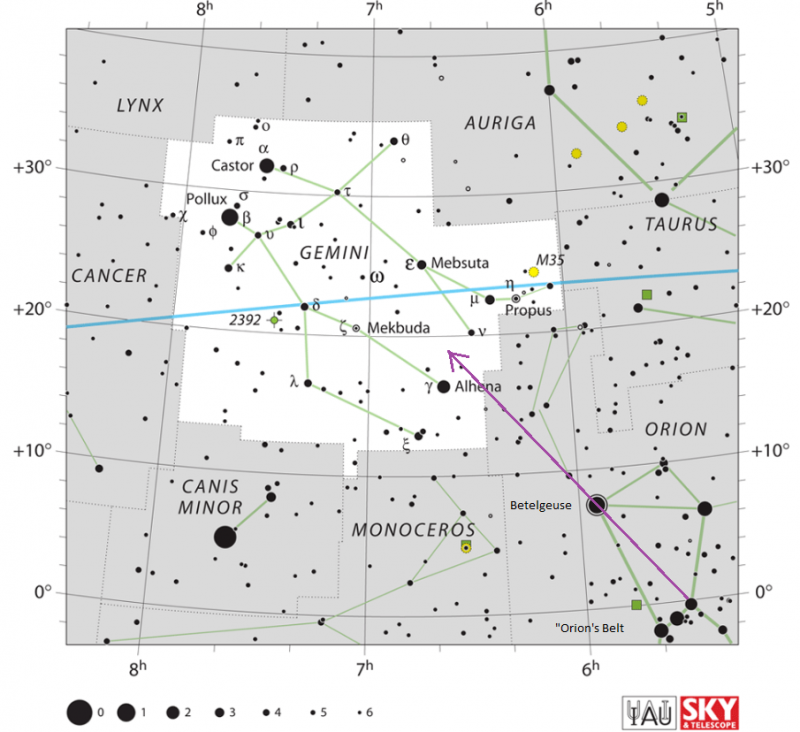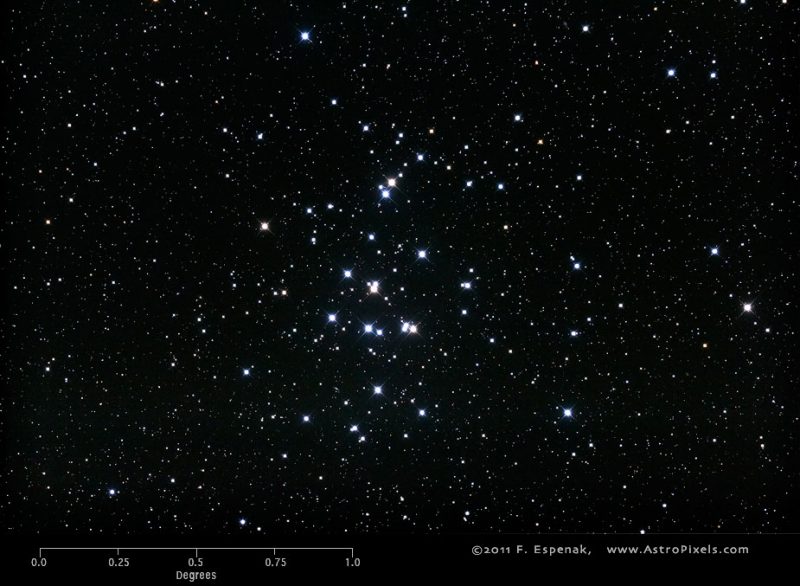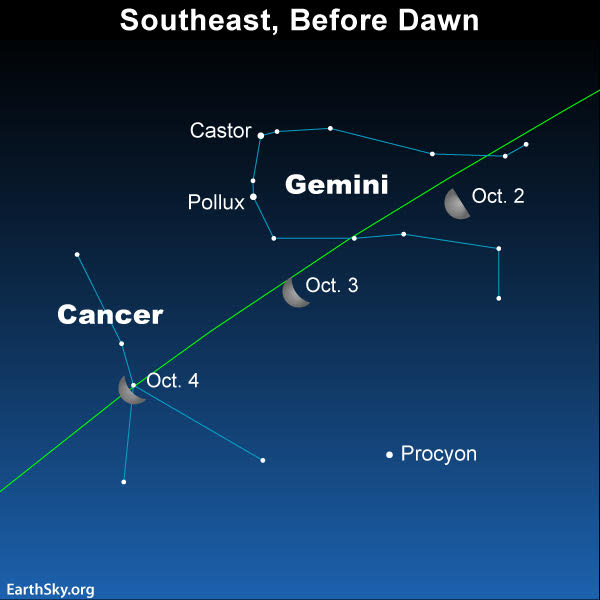On the mornings of October 2 and 3, 2018, rise before daybreak to see the moon shining in front of the constellation Gemini the Twins. You’ll have no trouble seeing Gemini’s two brightest stars, Castor and Pollux, near the moon.
These stars are sometimes called “twins,” but they don’t look alike in the sky. Pollux is brighter and more golden. Castor shines pure white.
Then – as the week passes – watch the moon move. It’ll be in front of Cancer the Crab – the faintest constellation of the zodiac – to the east of Gemini on October 4. Cancer is so faint that it’ll be all but impossible to see on that morning. But let the moon orient you so that you can come back later to view Cancer’s hidden treasure. More about that below.
Although the sky chart above is designed for temperate latitudes in North America, you’ll see the moon passing through Gemini and Cancer from all parts of the world. The moon moves in front of the constellations of the zodiac at the rate of about 1/2 degree (the moon’s own angular diameter) eastward per hour. So – for example – if you’re in the world’s Eastern Hemisphere at dawn on October 2 and 3, you’ll see the moon offset a bit, with respect to our chart, toward the previous date.
No matter where you are, just look for the moon. The stars near it on the mornings of October 2 and 3 will be Gemini’s stars. These two stars will be noticeable – even when the moon moves away – for being bright and close together on the sky’s dome.

The lit side of the waning moon moon always points eastward – the moon’s direction of travel – relative to the backdrop stars of the zodiac. So, as the moon makes its monthly rounds, it’ll sweep to the south of the Gemini stars, Castor and Pollux, and to the north of Procyon, the Little Dog Star, as it heads for the faint constellation Cancer.
Click here to know the moon’s present position in front the constellations of the zodiac.

Cancer’s hidden treasure. Cancer makes up for its lackluster stars with a beautiful deep-sky object within its boundaries. The Beehive cluster (aka Messier 44) is one of the most magnificent star clusters in all the heavens. On a dark night – with no moon – this cluster appears as a tiny faint cloud to the unaided eye. Through binoculars, this bit of haze explodes into a sparkling array of stars.
The lit side of the moon will be pointing in the direction of the Beehive cluster on October 2 and 3, and then will pass 1.2 degrees south of the Beehive on October 4. Try to note the stars around the moon on these mornings. Then come back when the moon has moved away to view the Beehive.

By the way, the moon reaches its half-illuminated last quarter phase on October 2. It’s the first of two October 2018 last quarter moons. Read more about the October 2 last quarter moon.
Bottom line: Wake up before dawn in early October 2018, and let the waning moon show you the zodiacal constellations Gemini and Cancer.












